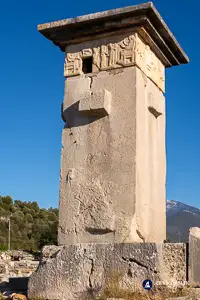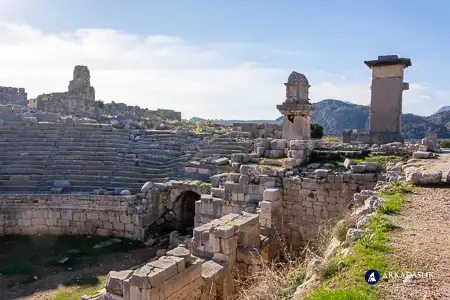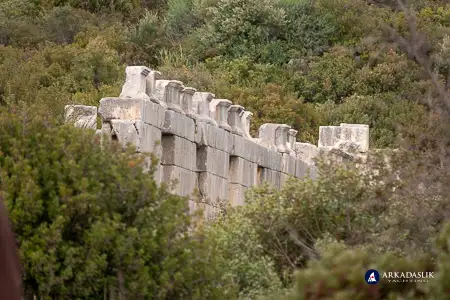Step back in time, not just to a pile of stones, but to a city with an unconquerable spirit. Located just 90 minutes from Fethiye, the UNESCO World Heritage site of Xanthos isn't just an archaeological park; it's the living testament to the Lycian people's fierce independence. This was their capital, their defiant heart, a metropolis so devoted to freedom that its people twice chose to burn their city to the ground rather than see it fall into enemy hands.
This is the story of Xanthos, a story forged in fire and resurrected with resilience.
History: Why This City Matters
The earliest whispers of Xanthos date back to the 8th century BC, a time when the Lycians were first carving out their place in this stunning landscape. But their path was not an easy one. The 6th century BC brought invaders - the Persians - and the Xanthians, faced with certain defeat, made a shocking choice. They gathered their women, children, and treasures in the acropolis, set it ablaze, and then fought to the last man. It was a harrowing act of collective defiance that would define the Xanthos legacy.
Remarkably, the city survived, rebuilt, and thrived once more. A second, similar tragedy would befall them centuries later, yet Xanthos rose from the ashes, a powerful testament to the unbreakable will of its people. This wasn't just a city; it was a symbol of Lycian determination.
By the time the Hellenistic and Roman eras dawned, Xanthos had transitioned from a city of defiance to the thriving capital of the Lycian League. Most of the structures you see today - the powerful echoes of a once-great city - date from this period of prosperity. But like all empires, its time would pass. The 7th century AD brought Arab raids and shifting trade routes, and the city’s heart slowly stopped beating. By the Ottoman period, Xanthos was a silent, forgotten ruin, waiting for the world to remember its story.
Modern Times
The ruins of Xanthos were brought to the attention of the modern world in the 19th century by British archaeologist Charles Fellows. His excavations were instrumental in unearthing the city, but they also led to the relocation of several of its most significant monuments. The famous Harpy Tomb and the Nereid Monument, masterpieces of Lycian art, were meticulously disassembled and transported to the British Museum, where they remain today. Visitors to Xanthos today will find replicas of some of these displaced treasures, a vivid reminder of the site's lost grandeur and a testament to its enduring legacy.
A Walk Through the City: A Journey to the Past
Today, Xanthos is an open-air museum, a place where you can wander through the layers of its dramatic past.
The Necropolis: Whispers of the Defiant Dead
Your journey should begin here, among the silent giants of the Xanthos necropolis. While other Lycian cities have beautiful rock-cut tombs, Xanthos is famous for its unique pillar tombs. Imagine a time when builders would lift a massive stone burial chamber atop a tall pillar, a final, dramatic statement of power and legacy. These aren't just graves; they are monuments to the city's heroes and leaders. The sheer engineering and ambition speak volumes about a civilization that honored its dead with a unique and powerful majesty.
The Acropolis: The Beating Heart of the City
Climb the hill to the acropolis, the vibrant center of ancient Xanthos. This was the hub of Lycian life, where political and social life unfolded. Though largely in ruins, you can still trace the outline of the agora (the marketplace), the temples, and private homes. This is where you can imagine the daily hustle and bustle, the conversations, and the decisions that shaped the Lycian world.
The Theatre: Entertainment for the Masses
Next to the acropolis, a classic Roman theatre stands as a reminder of Xanthos’ later prosperity. Built in the 2nd century AD to replace an earlier Hellenistic version destroyed by an earthquake, this theatre once hosted plays, gladiatorial games, and public gatherings. Sit on one of the stone benches and imagine the roar of the crowd and the drama unfolding on the stage.
The Basilica: A Shifting Faith
As you explore, you'll also find the remains of a large Byzantine basilica, a testament to Xanthos’ Christian era. This grand structure served as the city’s main church, showing how the city’s faith evolved over centuries, from the ancient gods of Lycia to the growing presence of Christianity.
The Spiritual Soul: The Sacred Sanctuary of Letoon
Your visit to Xanthos isn't complete without a short journey to its spiritual counterpart, the sanctuary of Letoon, just 2km away. While Xanthos was the political capital, Letoon was the sacred heart of the entire Lycian League. Here, amidst a peaceful, marshy landscape, you'll find the ruins of three temples dedicated to the patron gods of the Lycian world: Leto, Apollo, and Artemis. This is a place of profound tranquility, a quiet counterpoint to the dramatic history of Xanthos.
Xanthos Through Our Lens: A Photographic Exploration
Here's how we brought the history and beauty of Xanthos to life through our lens.
Click on any image to expand.
City View of Xanthos
A high-angle view from the top of the acropolis at Xanthos, looking down on the ruins of the Roman theatre and the open space of the agora below.

City View of Xanthos
A wide, panoramic view of the ancient city of Xanthos, showing the Roman theatre and the agora area in the distance, with the Harpy and Monumental Pillar tombs visible in the mid-ground.

Monumental Tombs at Xanthos
A close-up of a weather-worn interpretive sign at Xanthos, detailing the history and mythological significance of the Harpy Tomb.

Monumental Tombs at Xanthos
A close-up of the detailed relief carvings on the Harpy Tomb at Xanthos, depicting mythological figures and mythological creatures with human heads and bird bodies.

Monumental Tombs at Xanthos
A close-up of the detailed relief carvings on the top section of the Harpy Tomb at Xanthos.

Monumental Tombs at Xanthos
A close-up of the relief carving on the side of the Harpy Tomb, clearly showing the figure of a Harpy – a mythical creature with a womans head and a birds body.

Monumental Tombs at Xanthos
A detailed close-up of the relief carvings on the Harpy Tomb, focusing on a specific panel that shows a procession of figures.

Monumental Tombs at Xanthos
Oktay standing near the base of the Harpy Tomb and the Lycian Pillar Tomb, providing a sense of scale to the massive structures.

Monumental Tombs at Xanthos
A slightly different angle showing the Harpy Tomb and the Lycian Pillar Tomb standing above the theatre ruins, emphasizing their commanding position on the hillside.

Monumental Tombs at Xanthos
A view of the Harpy Tomb and the Lycian Pillar Tomb, taken from their base, looking up at their carved facades and the acropolis behind them.

Monumental Tombs at Xanthos
The famous Harpy Tomb and a nearby Lycian Pillar Tomb, both elevated on a prominent platform, overlooking the ruins of a classical theatre below.

Monumental Tombs at Xanthos
The Harpy and Lycian Pillar Tombs, with various scattered stone fragments and broken ruins at their base.

Monumental Tombs at Xanthos
The Harpy Tomb and the Lycian Pillar Tomb at Xanthos, silhouetted against a dramatic, dark, and cloudy sky.

Monumental Tombs at Xanthos
The Lycian Pillar Tomb at Xanthos, showing details of the how the sarcophagus looked like a Lycian temple.

Monumental Tombs at Xanthos
The top of the Monumental Lycian Pillar Tomb at Xanthos, showing the temple-like sarcophagus with a gabled roof.

Mosaics at the Xanthos Theatre
A detailed close-up of an ancient mosaic floor, showcasing a pattern of orange, black, and white geometric tiles, likely from a Roman-era building at Xanthos.

Mosaics at the Xanthos Theatre
A small, square section of ancient mosaic flooring, featuring geometric patterns in a variety of colors, located near the Xanthos theatre.
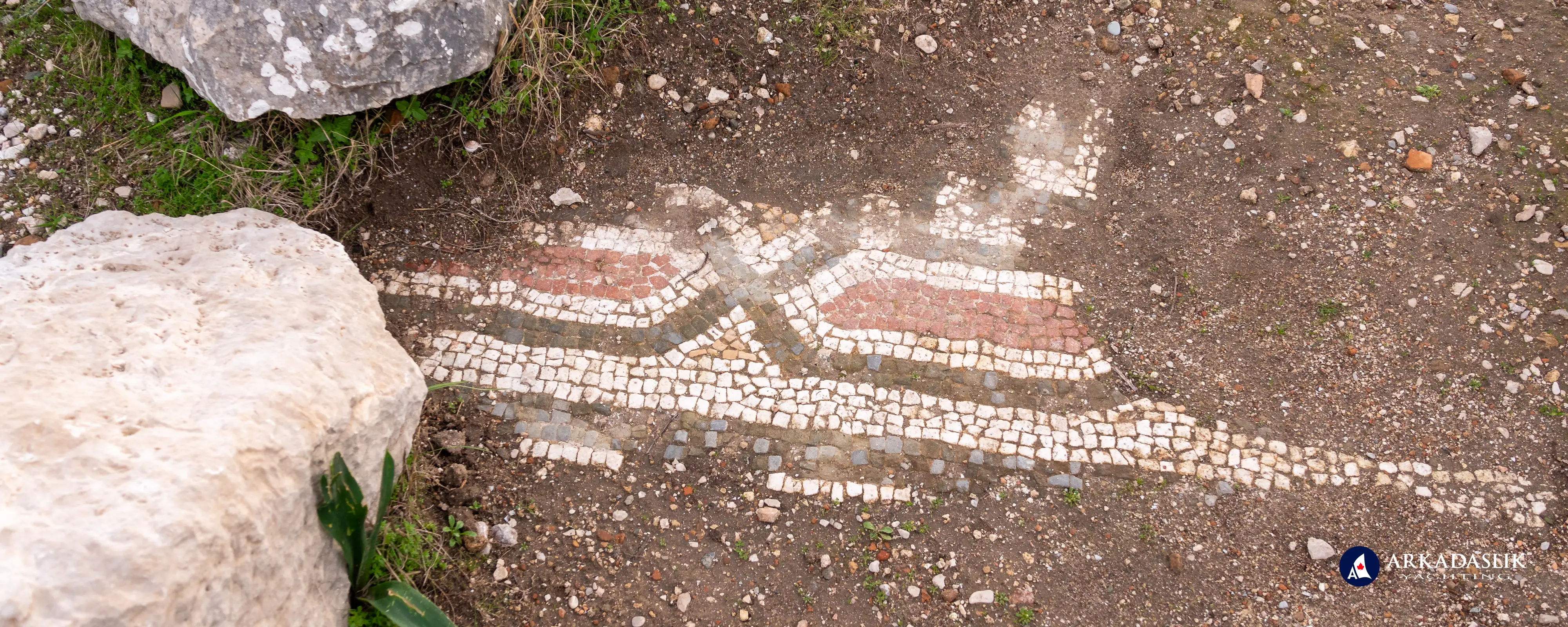
The Dancer‘s Tomb
A direct end-on view of the Dancer‘s Tomb sarcophagus, showing the vertical stone panel featuring a carving of two warriors standing on guard.

The Dancer‘s Tomb
A direct side view of the roof panel of the Dancer‘s Tomb sarcophagus, emphasizing its unique, curved shape and decorative details.
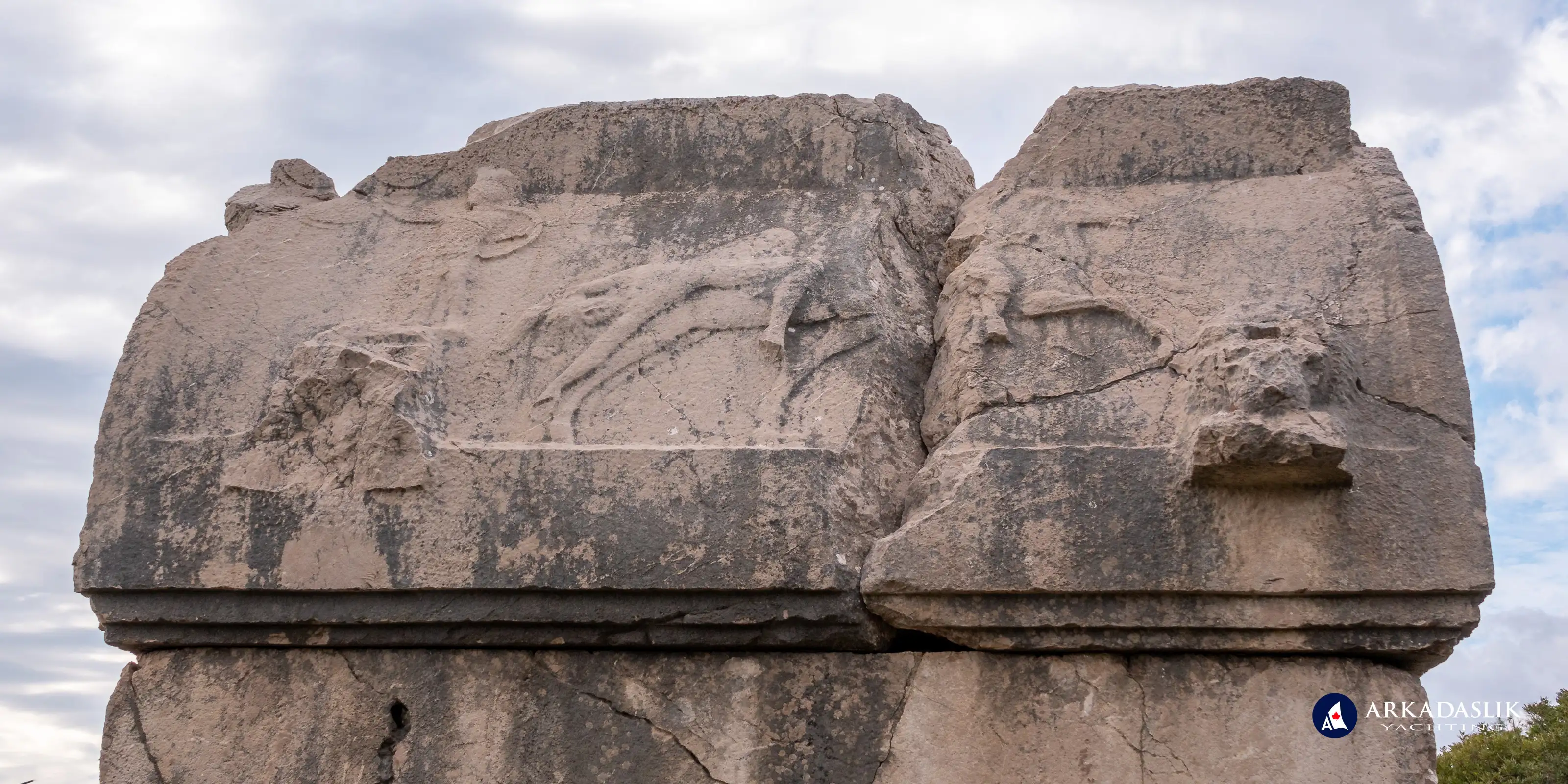
The Dancer‘s Tomb
An angled view of the curved, ornate roof panel of the Dancer‘s Tomb sarcophagus, depicting a hunting scene.

The Dancer‘s Tomb
The end of the Dancer‘s Tomb sarcophagus, showing two, carved figures of women dancing.

The Dancer‘s Tomb
The side of the so-called Dancer‘s Tomb sarcophagus, showing relief carvings on the sides and ends of the roof.

The Dancer‘s Tomb
The side of the so-called Dancer‘s Tomb sarcophagus, showing relief carvings on the sides and ends of the roof.

The Lion‘s Tomb
A close-up of the base of the Lion‘s Tomb, a Lycian pillar tomb, showing the carved foundation and the distinct lion figure relief that gives the tomb its name.

The Necropolis at Xanthos
A close-up ancient Greek text carved into the exterior wall of a Lycian rock tomb.

The Necropolis at Xanthos
A cluster of three Lycian rock-cut tombs, each with a different facade, carved side-by-side into the sheer cliff face of the Xanthos necropolis.

The Necropolis at Xanthos
A direct end view of a solitary Lycian sarcophagus, highlighting its high, pointed lid and the dense trees surrounding it.

The Necropolis at Xanthos
A dirt hiking trail with prominently posted warning signs winding between large, weathered rocks and boulders, suggesting a rugged and challenging path.

The Necropolis at Xanthos
A group of ancient Lycian tombs in the Xanthos burial ground, appearing partially sunk into the earth and showing signs of desecration, with broken lids and scattered stone fragments.

The Necropolis at Xanthos
A monumental Lycian pillar tomb with a square capital, photographed from a different angle, showing more of the surrounding rocky terrain.

The Necropolis at Xanthos
A monumental pillar tomb topped with a plain sarchophagus, surrounded by a group of Lycian rock-cut tombs at its base.

The Necropolis at Xanthos
A small, modest Lycian rock-cut tomb, with a simple archway entrance, partially hidden behind a cluster of large rocks and vegetation.

The Necropolis at Xanthos
A solitary Lycian sarcophagus, seen from the end, featuring a high, pointed lid and intricate carvings, surrounded by lush green trees.

The Necropolis at Xanthos
A tall Lycian pillar tomb stands in the background, partially obscured by a Lycian rock-cut tomb with a decorative facade in the foreground.

The Necropolis at Xanthos
A tall, monumental Lycian pillar tomb, topped with a square capstone, standing amidst a cluster of smaller Lycian rock-cut tombs on a rocky hillside.
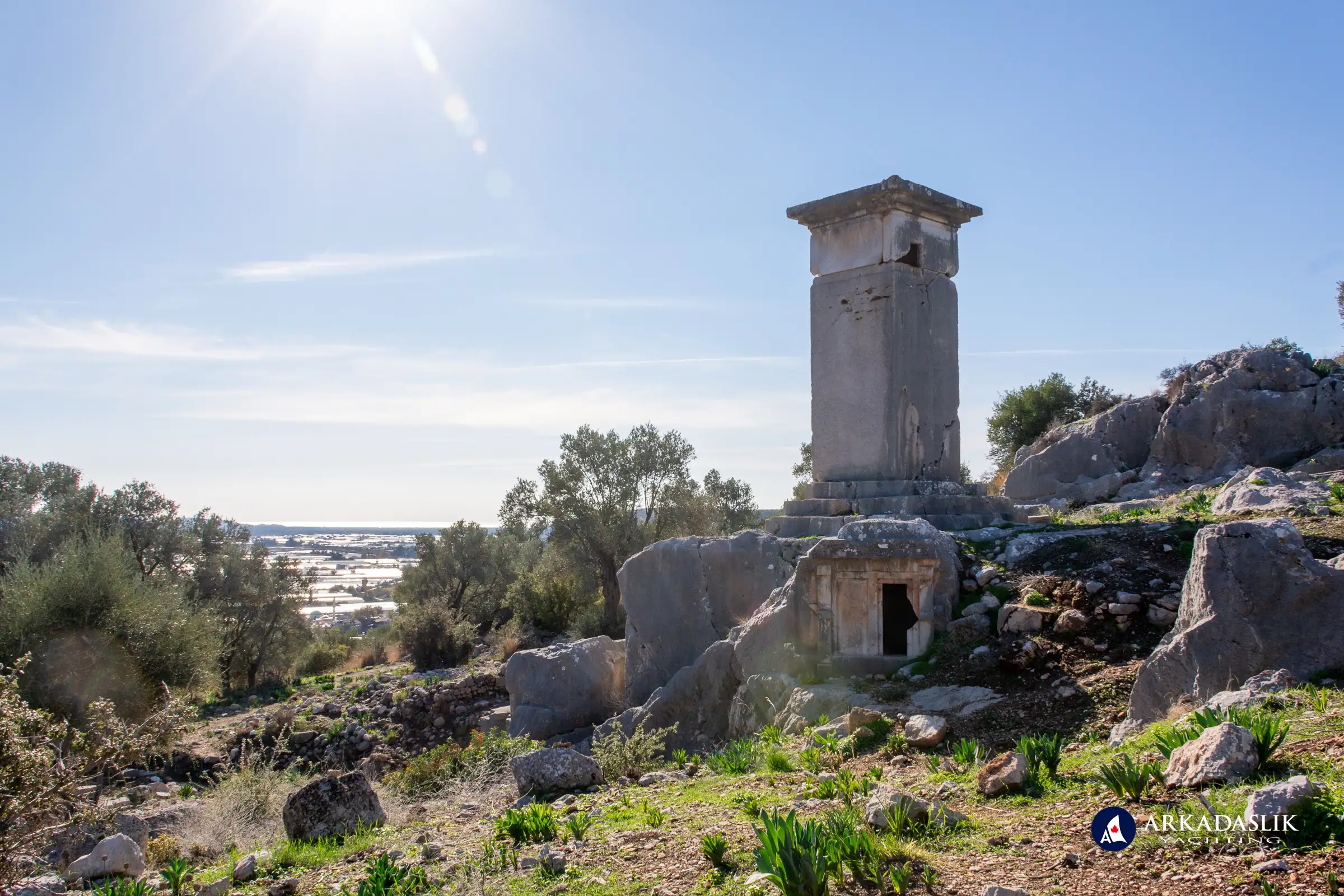
The Necropolis at Xanthos
A tall, slender Lycian pillar tomb rises behind a cluster of smaller Lycian rock tombs, showing the different styles of burial monuments at the site.

The Necropolis at Xanthos
An angled view of a single Lycian sarcophagus, showcasing its prominent, curved lid and the surrounding trees.

The Necropolis at Xanthos
The entrance to a small Lycian rock-cut tomb, carved directly into the face of a natural rock wall.

The Necropolis at Xanthos
The entrance to another Lycian rock-cut tomb, distinguished by a rectangular entryway and a simplified facade carved into the rock face.

The Necropolis at Xanthos
The large, grand entrance to a prominent Lycian rock tomb, also carved directly into the rock face, with a wide, open archway.

Xanthian Obelisk / Inscribed Pillar
A detailed close-up of the ancient Greek carvings and inscriptions on the base of the Xanthian Obelisk.

Xanthian Obelisk / Inscribed Pillar
The base of the Inscribed Pillar at Xanthos, also known as the Xanthian Obelisk, showing the Lycian and Greek inscriptions carved into the stone.

Xanthos City Wall
Oktay examining a section of the ancient city wall at Xanthos, which has several scattered artifacts nearby, including a stone block from the theatre and a carved stone with an inscription.

Xanthos Theatre
A close-up of the ancient Roman theatre at Xanthos, showing the semicircular stone seating, the proscenium wall, and the surrounding ruins.

Xanthos Theatre
A high-angle view from the upper seating of the Roman theatre at Xanthos, looking down on the stage area and the open space of the Agora beyond.

Xanthos Theatre
A view looking down from the top of the Xanthos theatre towards the modern ticket kiosk and visitor center at the entrance to the site.

Craftsmanship
A crenellated roofline, like that of a castle or palace, of a stone building peeks out from behind a mass of overgown vegetation.

Craftsmanship
A section of an ancient Roman wall, constructed with unusual five-sided, polygonal stone blocks.

Craftsmanship
A tall, well-preserved section of an ancient Roman wall, constructed from large, precisely cut stone blocks, standing perfectly straight after two millennia.

Craftsmanship
An ancient marble column fragment with faint Greek inscriptions, possibly a boundary marker or milestone, lying on the ground.

Craftsmanship
Decorative stone blocks, featuring intricate floral and geometric patterns, lying scattered on the ground near the base of an ancient stone wall, highlighting the ruinous state of the site.

Craftsmanship
Intricately carved stone blocks, possibly from a frieze or tomb, arranged for display on the ground at Xanthos.

Roman Road at Xanthos
A Roman-era stone road, lined with large, flat stones, running from the Agora towards the Basilica at Xanthos.

Roman Road at Xanthos
A stone road constructed during Roman times which runs from the Agora towards the Basilica at Xanthos.

Visitor's Guide: Tips for Visiting
- Getting to Xanthos – The site is easily accessible by car, motorbike, or bus. There is ample, free, on-site parking.
- On-Site Facilities – Although Xanthos is a UNESCO site, we found the site to be in relatively poor condition the last time we visited (January 2025). There was a lot of trash strewn about, graffiti, broken fences, and downed electrical cables. Signage around the site is lacking, so, in many instances, you have to guess at what you are looking at. That said, there are clean, working toilets and a small gift shop which also sells snacks, water, and soft drinks. (We brought our own food and drinks to avoid the exorbitant prices.)
- Price – As of January 2025, the entrance fee for visiting Xanthos was 115 TL or presentation of a Muze Kart. Note: Only Turkish lira are accepted as payment.
- Accessibility – The theatre and most of the agora are easily viewed from a road passing through the site, but actually exploring Xanthos requires a modest degree of physical fitness. (There are no sidewalks or handrails, and the terrain is uneven.) Exploring the necropolis requires some courage, good balance, and a sturdy pair of hiking boots.
Why Make the Trip to Xanthos?
Exploring Xanthos is more than just walking through the ruins of an ancient city - it’s the chance to peek through a window into an ancient civilisation standing at the crossroads of Greek, Persian, and Roman influences. If you want to escape the tourist trail and develop a deeper understanding of Lycian culture, consider a day trip to Xanthos on your next visit to the area. The beauty of the region and its unique architecture will not disappoint.
Additional Information: Sources We Referenced about Xanthos



